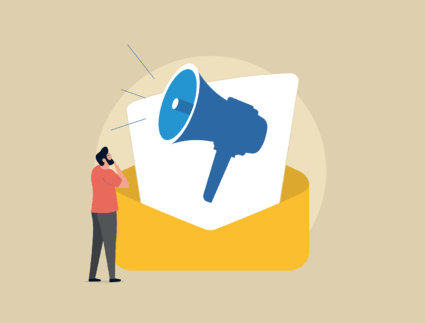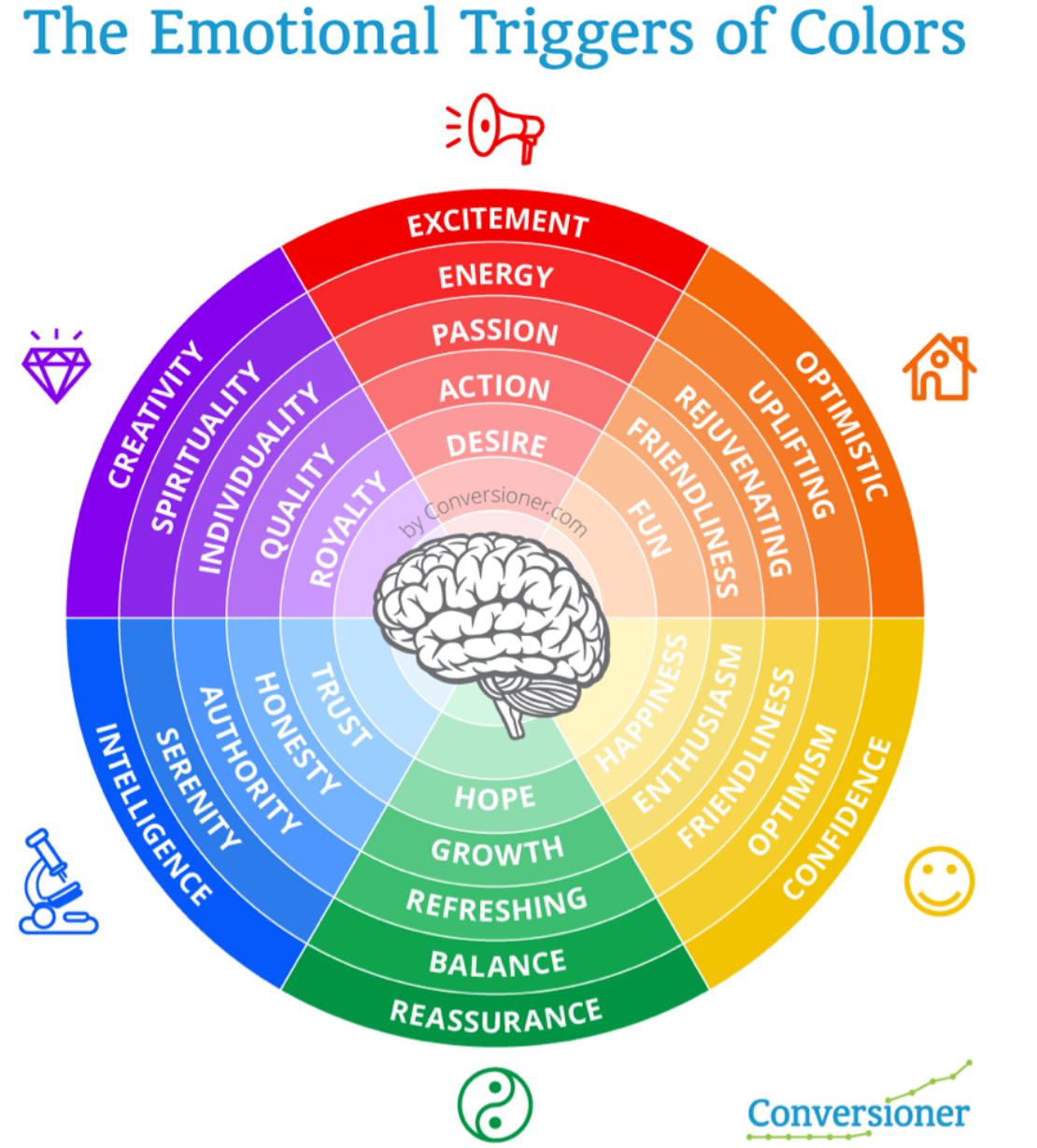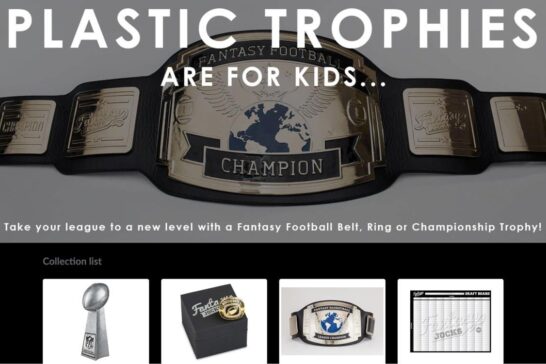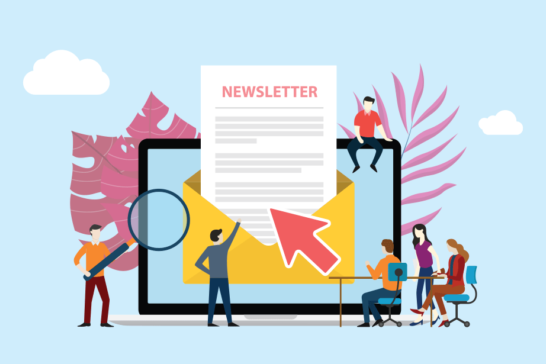
Email marketing stands out as the only touch point with customers you have complete control over. For instance, your social media accounts or website traffic that comes from search engines is affected by changing algorithms that impact your visibility.
That's where email marketing becomes invaluable. Unlike SEO and social media, email is a digital marketing channel that gives you consistent access to your audience—without any third-party interference.
But getting in touch with your audience isn't enough for email marketing success. A user may be interested in giving you their email address. But how do you keep them engaged and convince them to keep acting on your call-to-actions?
While compelling copy, design, visuals, and CTAs are the foundation for a great email, a conversion-focused email will take more. To consistently inspire action, you should deliberately apply more advanced techniques, such as email automation and personalization.
In other words, you need to learn the rules of creating emails that not only capture attention but convert, too. And to do so, here are five techniques that will help you turn passive readers into loyal customers.
1. Automate your Email Campaigns
Conversions rise when you nail both your timing and messaging. That's where email automation steps in, helping you build customized journeys based on each subscriber's actions and interests.
Let’s take a travel agency for example. They might have already incorporated automation into their travel email marketing strategy to send timely messages like booking confirmations. But how about using automation to increase conversions?
They could set an automated abandoned itinerary workflow that will trigger every time a visitor starts planning a trip on their site but doesn't complete the booking. After a set time, the travel agency sends an automated email reminding subscribers of their planned getaway. The email could include a discount or an additional service like a concert ticket as an incentive for readers to complete their booking.
Regardless of the industry you're in, there's a set of automated workflows that help you build conversion-focused emails with different objectives. Here are some examples:
- Set up automated follow-up emails that should be triggered after a visitor places an order on your site. You can use these workflows to thank shoppers for trusting your brand, ask for their feedback, and encourage them to send user-generated content.
- Win back dormant customers with automated re-engagement campaigns, scheduling them to be sent when a customer has remained inactive for a set period. Include effective tactics to reignite interest, such as incorporating social proof or using a small discount to bring them back to your website.
- Create seasonal campaigns. You can automate the entire process, from announcing limited-time promotions to setting up reminders until the promotion is over. You can use countdown timers to display the time left or mention how many customers have already benefited from the offer.
How can you get your hands on this kind of robust automation? Reliable email marketing platforms like Moosend offer advanced yet easy-to-grasp automation to set up the right workflows. Moosend's built-in Recipes or Constant Contact's ready-made Paths serve as the foundation for creating your own workflow by adding, removing, or editing triggers and conditional rules.
2. Stand Out with Personalized Email Content
Email gives you the advantage of reaching customers in a more personal and direct way. You can benefit from this characteristic by giving recipients what they need: content that’s customized to their profiles, patterns, and desires.
This level of personalization is key for making your emails conversion focused. By managing your audience data and tuning in their preferences, you're delivering value instead of simply promoting your products or services.
One way to go at it is through dynamic content. Let's take a beauty brand sending personalized product recommendations. An audience group that usually buys skincare products like moisturizers would get promotions for complementary products, such as facial cleansers. Whereas emails destined at consumers interested in makeup would display recommendations like brushes.
Another way to persuade readers to convert is to personalize the sending time. Different audience groups will open and click through emails at different times of the day. Besides their habits, it's important to consider their location, too. Here's how specific email sending times affect buying decisions in North America, Europe, and Asia:

3. Optimize your CTAs
When we talk about increasing conversion rates, it all comes down to checking and optimizing your call-to-actions. Just a link or button won't be enough to prompt action. You need to carefully think of the placement, copy, and design that's most likely to persuade your audience.
Here are some crucial tactics you can use for CTA optimization:
- Try to stick to one CTA per email. While there's nothing wrong with including more than a single CTA, it's better to focus on one action so you don't confuse your readers.
- If you choose one main CTA, consider including the same CTA again further down the email for readers who don't act on the first one.
- Start your CTA copy with action verbs. Also, focus on the value of the action instead of simply describing that action. For instance, “Click Here” won't work as well as “Get Expert Tips.”
- Use clear and short copy that describes precisely what recipients should expect upon clicking.
- Try bright colors that catch attention and add plenty of contrast between your CTA and other elements. Keep in mind, though, that not all contrasts work in terms of accessibility, so make sure you check this parameter, too.
- Place your CTA prominently within your email content, guiding readers naturally toward conversion.
- Experiment with CTA copy, size, color, and placement, performing A/B tests to track which variations your subscribers prefer.
Be creative. CTAs that are strategically placed at the top of an email can stand out. And make sure to use white-space to your advantage to increase the CTA effectiveness. Use powerful copy and even consider using testimonials directly in your emails to provide added social proof.
You can also convert email to QR code to extend your campaigns beyond the inbox. This lets subscribers instantly access offers, landing pages, or promotions from offline materials, creating another engagement touchpoint that can help drive more conversions.
4. Harness Emotional Triggers
There's a reason why showing instead of telling is so popular in marketing. Consumers prefer to visualize what they'll purchase before committing to any action, whether it involves money or time. To create conversion-focused emails, invest in visual content that activates your audience's emotions.
Images and videos are a great method to immerse subscribers in what it may feel like if they use your products or services. Especially video marketing helps them understand the value of your offerings in real-life situations and imagine themselves in relevant scenarios.
Visuals also drive conversions through the Fear of Missing Out. FOMO is based on the human need to feel included. People want to be part of exciting events and treat themselves by purchasing popular products or services.
So, you may want to create a sense of urgency in your emails by highlighting that your offer stands for limited time or using timer emojis in your subject line. Another powerful tactic is to leverage scarcity. For instance, you could offer a coupon code to the first 50 people that will click on your CTA. Both tactics work great in urging readers to act quickly, so they don't risk being left out of something valuable.
But emotions have a lot to do with color choice since colors have the trigger this type of response, too. People associate different colors with different emotions. If you want to build trust and calm your readers, consider adding blue shades to your email. But when you aim to evoke joy, yellow is a much better option. The following graph shows how people tend to perceive colors:

5. Test, Monitor Performance, and Optimize
Setting up conversion-focused emails is a never-ending process. For as long as you use email marketing, there’ll always be things track and optimize. You should start with A/B testing key elements of your emails to find out which variants result in better conversions.
Test email components like your subject line, email copy, layout, CTA, visuals, and sending time. You can start by sending two email variants only to a small segment of your list. Once you pinpoint what elements resonate most with your recipients, it's time to send the winning variant to the entire list.
Also, remember that if you want your emails to bring high conversions, it's crucial to constantly monitor email performance. Tracking important KPIs like opens, clicks, and conversions will help you identify low performing elements and refine them to create conversion-focused emails that work every time.
Think of it like this: A/B testing will allow you to make the best decision when sending a new email campaign. Whereas analytics will help you look at the bigger picture, compare multiple campaigns, and understand what you can improve. Both tactics result in more conversion-focused emails. Just as long as you keep refining your campaigns.
Remember that your audience is dynamic, and so are their preferences. What works now won't necessarily work forever. So, ensure you A/B test key elements to send the winning version and track important email marketing metrics over time. That's how you can constantly optimize your emails for conversions based on the data you collect.
Elevate your Email Marketing for Lasting Impact
Every email you send is an opportunity for converting subscribers into repeat customers. But success goes beyond hitting “send”—it's about using the right tactics to connect with subscribers in ways that deliver value.
Instead of just following the tactics listed here, take the time to understand your audience's preferences and behaviors. Look for engagement patterns, experiment with what resonates best with them, and ask for their feedback. Then, you should be ready to tweak your email campaigns based on the insights. After all, it's all about them.
Doing a little spy work on your competitors won't hurt either. Spotting potential gaps in their strategy lets you figure out if there's an ingredient missing, leaving opportunities to differentiate yourself.
By adopting these email marketing practices and responding to your audience's needs, you won't just clear the path to conversions. You'll be creating lasting experiences that keep recipients coming back for more.



